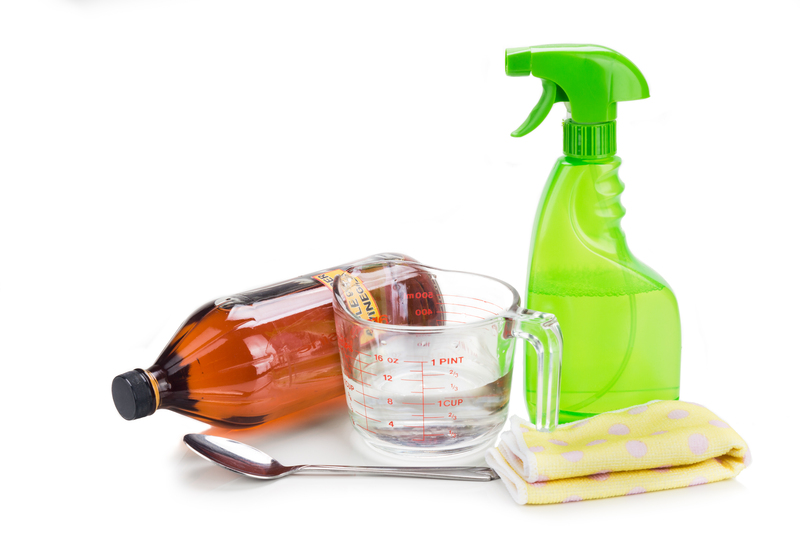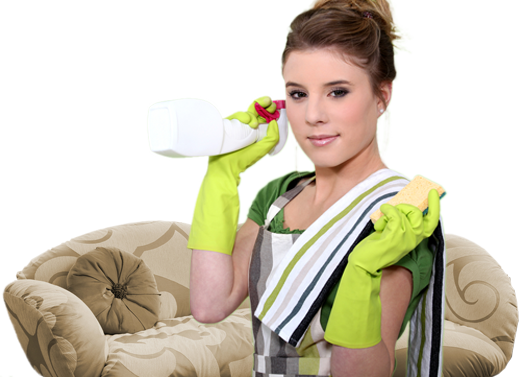Enhancing Life Quality Through Better Indoor Air
Posted on 03/07/2025
Enhancing Life Quality Through Better Indoor Air
Did you know most of us spend nearly 90% of our time indoors? Whether it's at home, in the office, or even at the gym, the quality of indoor air plays a crucial role in our overall health and well-being. While outdoor air pollution gets a lot of attention, research shows that poor indoor air quality (IAQ) can be even more detrimental to our lives.
This comprehensive article delves into how better indoor air can enhance your life quality, explores the causes and consequences of indoor air pollution, and offers practical solutions for creating a healthier and more comfortable living environment.
Understanding Indoor Air Quality: Why It Matters
Indoor Air Quality (IAQ) refers to the air quality within and around buildings, especially in relation to the health and comfort of building occupants. While it might seem trivial, the air inside your home, school, or office can be up to five times more polluted than outside air, according to the Environmental Protection Agency (EPA).
How Poor Indoor Air Quality Affects Daily Life
- Respiratory Issues: Poor air quality can aggravate asthma, allergies, and other respiratory problems, especially in children and the elderly.
- Sleep Disturbances: Pollutants and allergens in the air can disrupt sleep, lowering energy levels and reducing productivity.
- Cognitive Decline: Studies show that high carbon dioxide levels and volatile organic compounds (VOCs) can impair concentration, problem-solving, and decision-making abilities.
- Increased Risk of Chronic Diseases: Exposure to indoor pollutants--such as mold, formaldehyde, and particulate matter--may contribute to heart disease, cancer, and neurological disorders.

The Common Causes of Poor Indoor Air Quality
To truly improve the quality of indoor air, understanding the sources of pollution is essential. Some pollutants originate from inside the building, while others infiltrate from the outdoors.
Indoor Sources
- Combustion Appliances: Stoves, heaters, and fireplaces can emit carbon monoxide, nitrogen dioxide, and fine particles.
- Tobacco Smoke: Cigarette, cigar, and pipe smoke produce countless harmful chemicals.
- Household Products: Cleaning agents, air fresheners, paints, and pesticides release VOCs and chemicals.
- Building Materials: Formaldehyde and asbestos may be present in insulation, flooring, and furniture.
- Mold and Pollen: Damp conditions promote mold and mildew growth, while plants release pollen indoors.
- Pet Dander: Pets shed skin flakes and hair, which can trigger allergies.
Outdoor Pollutants That Enter Indoors
- Particulate Matter (PM): Tiny particles from car exhaust, industry, and wildfires can enter homes through open windows and doors.
- Pollen and Spores: Seasonal pollen and fungal spores often drift inside, aggravating allergies.
- Radon Gas: Naturally occurring radioactive gas that can seep into homes, increasing lung cancer risk.
The Benefits of Improving Indoor Air for Life Quality
By enhancing the air you breathe indoors, you stand to enjoy a multitude of life-changing benefits:
- Greater Energy and Focus: Clean air helps prevent "brain fog" and keeps your mind sharp.
- Better Sleep: Removing allergens and irritants can vastly improve sleep quality and duration.
- Enhanced Mood: Fresh air reduces stress, anxiety, and symptoms of depression.
- Strengthened Immune System: Lower pollutant exposure reduces the load on your immune defenses.
- Long-term Wellness: Cleaner air can reduce the risk of developing chronic respiratory and cardiovascular diseases.
- Improved Productivity: Students and professionals working in healthy environments perform better and get sick less often.
Key Strategies for Achieving Better Indoor Air
If you want to raise your indoor air quality and enhance your life quality, there are several tactics you can implement--many easier than you might think.
1. Ventilation: The Foundation of Clean Air
Proper ventilation is the most efficient way to dilute indoor pollutants and maintain a healthy indoor environment. Consider the following methods:
- Open Windows and Doors: Weather permitting, let fresh air circulate, expelling stale air and indoor contaminants.
- Install Exhaust Fans: Especially in kitchens and bathrooms, exhaust fans remove moisture, odors, and chemicals from the air.
- Use Mechanical Ventilation Systems: Heat recovery ventilators (HRVs) and energy recovery ventilators (ERVs) bring in fresh air while minimizing energy loss.
2. Source Control: Remove or Reduce Indoor Pollutants
The most effective way to improve indoor air is to eliminate sources of pollution:
- Opt for Low-Emission Household Products: Choose paints, cleaning agents, and furnishings labeled "low-VOC" or "eco-friendly."
- Prohibit Smoking Indoors: Make your home a smoke-free zone to avoid the risks of secondhand smoke.
- Keep Pets Groomed: Regular bathing and vacuuming can significantly reduce pet dander.
- Fix Water Leaks Promptly: Moisture and leaks contribute to mold growth--fix them quickly to prevent spores from spreading.
3. Maintain Optimal Humidity Levels
Keeping indoor humidity between 30% and 50% helps prevent both mold and dust mites. Use dehumidifiers in humid climates and humidifiers in dry conditions, but always clean them as recommended.
4. Regular Cleaning and Maintenance
Routine cleaning prevents dust, allergens, and mold buildup. Best practices include:
- Vacuum Often, preferably with a vacuum fitted with a HEPA filter.
- Wash Bedding and Curtains regularly in hot water to eliminate dust mites and allergens.
- Minimize Clutter where dust and allergens can accumulate.
5. Invest in High-Performance Air Purifiers
Air purifiers equipped with HEPA (High-Efficiency Particulate Air) filters and activated carbon layers can trap fine particles, pollen, smoke, and even gases. They work best in bedrooms and living areas where you spend most of your time.
6. Select Indoor Plants Wisely
While some plants like peace lilies and spider plants may help filter toxins, avoid plants if household members have pollen or mold allergies.
Special Considerations: Children, Elderly, and At-Risk Individuals
Certain groups are especially sensitive to poor indoor air quality:
- Children: Their developing lungs and immune systems are more susceptible to pollutants.
- Elderly: Older adults may have weaker respiratory and cardiovascular systems.
- People with Asthma or Allergies: Even low levels of indoor pollutants can trigger symptoms and severe reactions.
- Pregnant Women: Contaminated indoor air can affect both maternal and fetal health.
For these at-risk groups, ensuring excellent indoor air quality can mean fewer doctor visits and better quality of life.
Smart Technology for Enhanced Indoor Air Quality
Today's solutions for improving indoor air are more advanced than ever. From smart air purifiers to connected HVAC systems, technology puts the power of clean, healthy air within everyone's reach.
Smart Air Quality Monitors
- Detects particulates, VOCs, CO2, humidity, and temperature
- Sends real-time alerts and air improvement suggestions to your smartphone
Wi-Fi Enabled Air Purifiers
- Can be controlled remotely and automated to run when pollution is detected
- Allow scheduling and monitoring filter life
Smart HVAC and Ventilation Systems
- Automatically adjust ventilation based on occupancy and air quality data
- Integrate with home automation for maximum efficiency and comfort
Recognizing the Signs of Poor Indoor Air Quality
Sometimes, it's hard to realize your indoor air is making you sick. Watch for these common signs:
- Persistent "Stuffy" or "Stale" Odors
- Visible Mold Spots on ceilings, walls, or windowsills
- Frequent Sneezing, Coughing, or Allergy Symptoms among family members
- Fatigue and Unexplained Headaches
- Condensation on Windows or Walls
Creating an Action Plan to Improve Indoor Air Quality
Integrate these steps for a holistic approach:
- Test and Monitor - Use air quality monitors to understand the baseline and track improvement.
- Upgrade Ventilation - Regularly check vent fans and consider upgrading to mechanical ventilation if needed.
- Identify and Address Pollution Sources - Look for hidden mold, test for radon, and store chemicals outside living areas.
- Adopt Healthy Cleaning Routines - Use non-toxic cleaners and develop a consistent cleaning schedule.
- Use Air Filtration if Necessary - Pick the right air purifier for your space and air quality needs.
- Maintain Optimal Humidity - Use dehumidifiers or humidifiers wisely, and empty and clean them often.
- Educate and Involve Everyone - Encourage all family members to participate in improving air quality habits.

Frequently Asked Questions About Indoor Air Quality (IAQ)
1. How often should I change my HVAC or air purifier filter?
Most filters should be changed every 3-6 months. However, homes with pets or smokers may need monthly changes. Always check manufacturer recommendations.
2. Are indoor plants effective air purifiers?
Some plants can filter certain VOCs, but they cannot remove all pollutants. Mechanical filtration remains more effective, particularly for those with allergies.
3. What is the healthiest way to ventilate a home?
Combining natural ventilation (windows and doors) with exhaust fans and advanced mechanical ventilation systems provides the best results year-round.
4. How do I test for radon?
Radon test kits are available at most hardware stores. If results show high levels, contact a certified mitigation professional for solutions.
Conclusion: Transforming Life by Breathing Better
Clean, healthy indoor air is no longer a luxury--it is a necessity for thriving in today's world. Enhancing your indoor air quality pays off with improved health, deeper sleep, sharper minds, and a happier home. By taking practical steps--ventilation, source control, regular cleaning, and using today's technology--you can transform the quality of your indoor environment and, as a result, your overall quality of life.
Remember: the air you breathe indoors shapes your future health, energy, and happiness. Begin your journey toward better indoor air today and experience the difference it can make!



